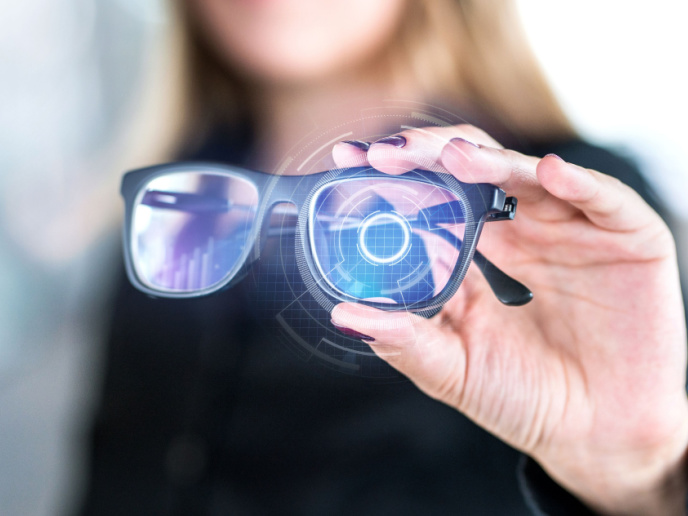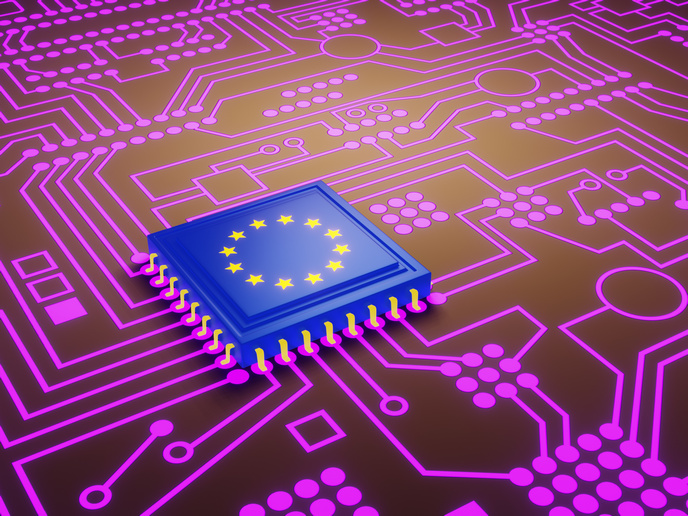Smart glasses help older workers to see better
Healthy eyes and vision change with time. This is why adults over 40 are more likely to squint at small print or hold a book at arm’s length. While it’s common for the sharpness of vision to decline with age, it’s not inevitable. Technology can help. The EU-funded See Far(opens in new window) project has developed a pair of glasses like no other. From the augmented reality component to the embedded navigation system and the display lenses, the technology behind these smart glasses is advanced. “The See Far glasses constitute a platform that allows a large number of user parameters to be monitored from the analysis of eye-tracking cameras,” explained project coordinator, Ramon Gonzalez Carvajal. “Combining this information with the user's visual impairment data and artificial intelligence algorithms allows the user to be advised on various aspects ranging from diet and healthy habits to how to use the glasses.” There is also a portable ophthalmoscope which makes it possible to monitor eye pathology and adapt the visual aids to the reality of each user. The glasses are designed to empower older adults to enjoy a safer exploration of indoor and outdoor environments. And with people living longer, many will stay in work well past conventional retirement age. This puts the focus on vision enhancement technology since loss of vision among elderly is a major healthcare problem. This is related to the project’s mission: to support Europe’s ageing workforce with vision deficiencies. What’s more, its solution is low cost and unobtrusive. It also contributes to the key elements of physical health (minimising the risk of falls, eyestrain and eye fatigue), ergonomics (promoting interventions for the creation of a safe working environment) and technology (ICT solutions that support the users to perform daily activities).
Improvements based on user feedback
While the most complex part of the development phase has been completed, a few more steps remain – in terms of engineering and design work – to bring the glasses to market. “See Far glasses require further development, in order to reach the market,” explained Carvajal. “First of all, we should reduce their size and power consumption. In addition, increasing the accuracy of some cameras would improve the user experience. Finally, improving component integration would facilitate size reduction.” These design issues stem from testing. The feedback was very encouraging. According to Carvajal, users see a lot of potential in the glasses and proposed improvements. “The users find many of the visual aids useful, especially the magnification,” he said. “They also feel that the glasses should be reduced in size.”
Looking for strategies to keep older workers active
The See Far ambition is in line with the European Commission’s proposals to embrace the life course approach based on healthy ageing and life-long learning. There is a push for more ICT-enabled solutions (AI-based tools to address the challenges faced by older workers and their employers) to help them reach higher productivity, life and work satisfaction, and inclusion of the older workers in the labour market. See Far is in line with the new technologies that are allowing the development of smart devices and glasses, which will facilitate the adaptation of patients to their work environment. While the See Far project ended in May 2022, work continues with the development of the smart glasses. “During the project, it has been demonstrated that the glasses are not only a solution to the problem at hand, but also a development platform for future projects,” said Carvajal. “Thus, we will also explore the potential of the glasses to address new projects involving the diagnosis of pathologies.”







